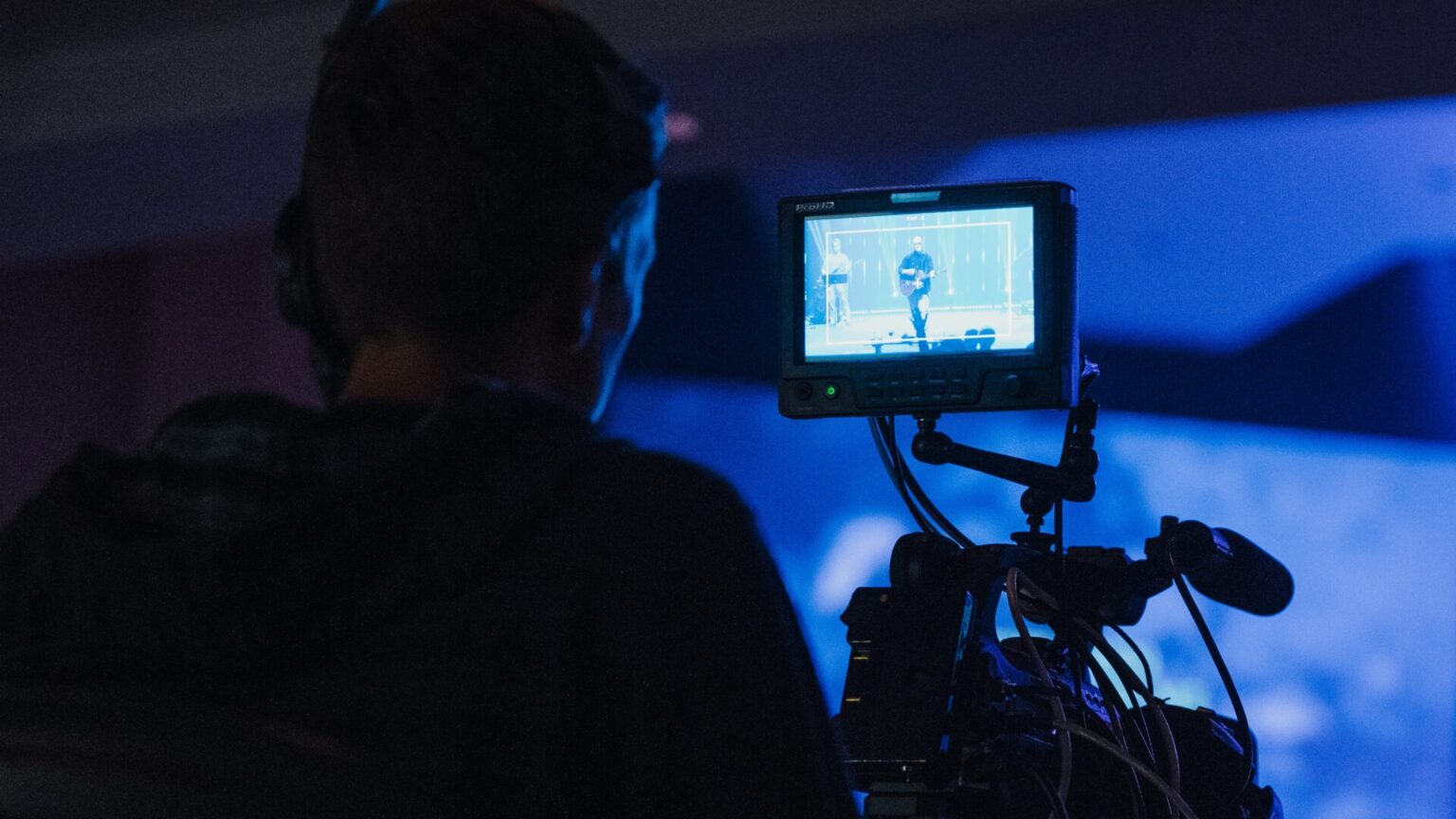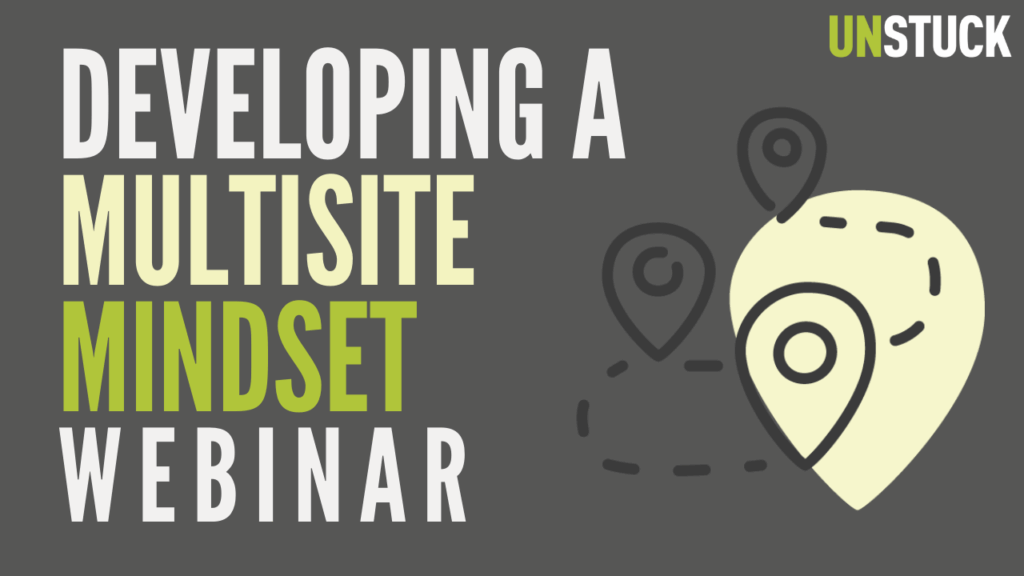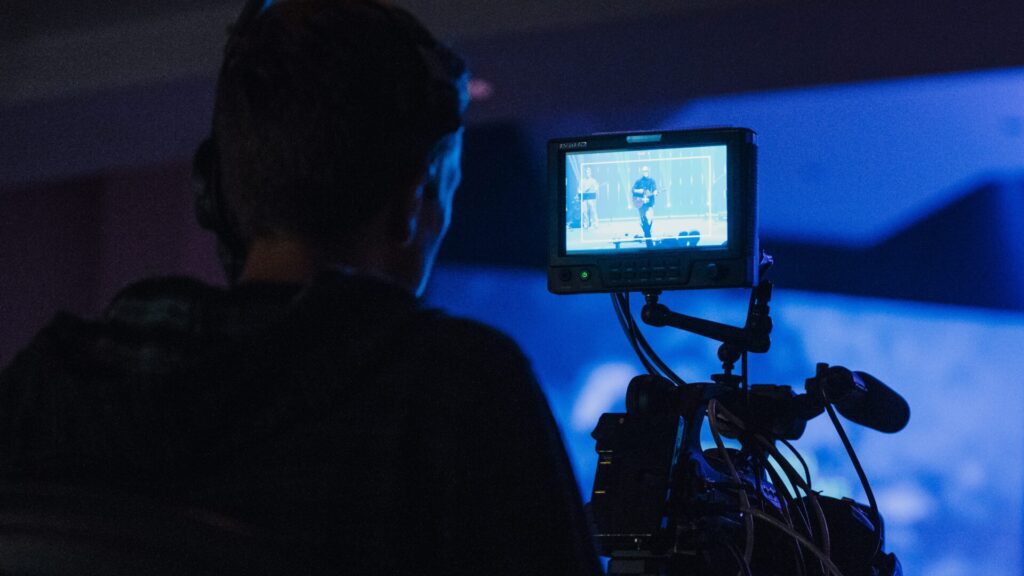Multisite Missteps (Part 3)
If you enjoy this episode, subscribe on your device for more:
Apple Podcasts RSS Spotify iHeart Radio
Live teaching or video teaching? It’s one of the most debated questions in any multisite conversation. Everyone seems to have a strong opinion, but the best choice isn’t always the most obvious—and the data may surprise you.
In this episode, Sean and I answer this age-old question with proven data and real stories, outline what to consider when making this decision (including technology), and offer practical strategies to help you avoid missteps in your teaching model. If you’re launching a campus—or just wondering if it’s time to rethink your approach—this episode is for you.
The healthiest multisite campuses are much more likely to use video teaching. Multisite churches that eventually closed campuses were 4x more likely to have used a model where the campus pastor was the primary teacher. [episode 397]… Share on X Whoever talks the most from the platform in a church setting sets the culture—intentionally or neglectfully. [episode 397] #unstuckchurch Share on X Your teaching model should serve your mission—not the other way around. [episode 397] #unstuckchurch Share on X The key with multisite church is having something that's working and replicating it. Be consistent across campuses. [episode 397] #unstuckchurch Share on X

This Episode Is Brought to You By PlainJoe.
Are you considering adding a second or third campus to your growing church? Need help telling your church’s unique story across every location? PlainJoe, a Storyland Studio, has you covered. Their team of creative storytellers, talented designers and innovative architects are passionate about helping churches tell their stories through spatial, interactive and strategic storytelling.
Reach out to learn more at plainjoe.net.
Get the Leader Conversation Guide
Opt-in here and get access to the Leader Conversation Guide for this episode and to the full archive. Emailed each Wednesday.
Share Your Thoughts and Questions on Social Media
We use hashtag #unstuckchurch on X @unstuckgroup and on Instagram @theunstuckgroup.
Write a Review—It Helps!
Your ratings and reviews really do help more pastors discover the podcast content we’re creating here. Would you take a minute to share your thoughts? Just open the the podcast on iTunes on your phone or computer, click Ratings & Reviews, and leave your opinion. Or leave us 5 stars on Spotify.
The Multisite Launch Process
Start a conversation today to learn more about how we can help you fulfill God’s calling on your church to reach more people in more places.
Transcript
Sean:
Before Amy and I start this week’s conversation, I wanna tell you about a great opportunity. If you’re a church that’s considering going multi-site or adding locations to your current church, you are going to need help as a multi-site church telling your church’s unique story across every location and PlainJoe can help with just that. They have a creative team of storytellers, talented designers, and innovative architects that are passionate about helping churches tell their stories through spatial, interactive, and strategic storytelling. You can reach out to them today and learn more at plainjoe.net.
Well, welcome to the Unstuck Church podcast. I’m Sean, your host here with my friend and teammate Amy Anderson. Today, we’re continuing our series on multi-site missteps, focusing on teaching model regrets. Amy, this is such a crucial topic for churches considering or already doing multi-site, right?
Amy:
Yeah, absolutely. Sean, you know, the teaching model decision, I believe is one of the most critical choices a church makes in their multi-site strategy.
Sean:
Agreed.
Amy:
And in a series about missteps, we couldn’t leave that out.
Sean:
That’s right. So let’s dive right in because I know listeners want to get right to the content on this one. This is definitely one of those conversations that creates the most tension when people talk about multi-site. There are strong beliefs about why it should be video teaching only, or live teaching only, or a combination of the two. What’s the underlying issue here, Amy?
Amy:
I think the bottom line is that people have a gut level response to whether they are pro video teaching or pro-live teaching. I think some rooted in their interpretation of scripture and some rooted in things they’ve seen happen at other churches. But it seems like there are always strongly held opinions on staff really even before the church gets into multi-site planning. So if you have never been a multi-site church before, it’s important to remember that you don’t know what you don’t know. And many church leaders, you know, I think they look at other multi-site churches as an example of whatever approach they already think is best and let that serve as a confirmation of the validity of their opinion. But the truth is many have no idea why that strategy might work or not work in a church from the outside looking in.
Sean:
Yeah. Well, anytime we need to kind of test our assumptions about a decision that we need to make, data and stories are a great source of wisdom for us. So, Amy, I wonder what data and stories could we share today to help illuminate where the regrets are most likely to occur around teaching models in multi-site churches?
Amy:
Sure. Well, let’s start with some of our recent data. The data’s clearly in favor of video teaching from our Q4 2024 Unstuck church report. So just a few months back, two thirds of the churches that completed the survey, they use video teaching as the primary method for message delivery. So two thirds of that 42% deliver teaching primarily through video. And 24% use a combination of video and in-person teaching. Only 27% of churches use a teaching model where the campus pastors are the primary teachers at their locations.
But here’s the one that stands out to me even more than the others because it’s related to outcomes. The other facts I just gave you, the percentages, they’re all just facts. They’re just what they are. But they have no connection to the outcomes of the health of the multi-site church. But this one does. Multi-site churches that eventually closed campuses were four times more likely to have used a model where the campus pastor was the primary teacher. And from our consulting experience, the healthiest multi-site campuses are much more likely to use video teaching, which is why we tend to recommend it as a best practice for message delivery.
And so if that’s the data, here’s my stories. I have worked with two churches this past year. They brought us in for strategic planning, and it’ll illustrate this. These two churches had a lot in common. Both were about 2000 in size, average weekend attendance. Both had a vision to open more locations of their church through multi-site. Both had one multi-site location that they had launched a few years back and both had models where the campus pastor was doing the teaching.
So what were the outcomes three years in? Tension, financial challenges, relational strains, and a misalignment of ministry models. What I mean by that is that the culture at the multi-site locations for both churches were different from the original locations.
Sean:
Sure.
Amy:
And it makes sense. We say it all the time. Like it or not, whoever talks the most from the platform in a church setting sets the culture intentionally or by neglect. So different people teaching on different stages build different cultures over time. And neither of these multi-sites were building bad cultures. They weren’t being sinful.
Sean:
Yeah, right.
Amy:
They were just leading out of who they are and they were trying to meet the needs of their unique location. But that creates a crack in being one church in multiple locations. So both of these churches came to the conclusion that it would be best really for the multi-site and for the original site to launch these locations to be their own churches.
And, and I guess, you know, I pause because I think you could argue, well, that’s a win because a church was planted. But honestly, not all multi-sites can afford to do that. These two churches were in a financial position where they could provide support to launch it. And I would say the campus pastors are really impacted. Because yes, they get the autonomy that they probably desired, but they also now have a financial responsibility. They need a board. They need operational systems. And I would say, in one of these churches in particular, the campus pastor was upset with the decision because while he was really leading that campus, and again, not in a sinful way at all, he was just trying to lead his church. But he felt that panic, maybe I could say when it was like, oh, but I need all this central support.
So anyways, and another one, I got a call just at the beginning of the year from a church we served back in 2017, I think it was when we helped them get their multi-site plans put together. And he called ’cause he wanted to bring us back in. And long story short, they listened to all of our counsel on multi-site except the teaching model. And I love this guy. He actually chuckled as he said to me, we thought we would be the exception to the rule. And again, they had to release two locations, and they’re back to being a single site church. And it just didn’t turn out the way they had planned with their multi-site strategy. And that’s the bottom line. This was not the outcome any of these senior pastors had in mind when they went multi-site. And the stress on the organizations during those years, it left some scars. So live teaching at a campus can work for a season, but it almost never works indefinitely. And there are a few exceptions out there. And I do mean a few like, Community Christian in Chicagoland. Sean, you actually work there and they’re very unique in their approach, aren’t they?
Sean:
Yeah, definitely were, a few things that were unique that kind of set Community apart. First of all, they had a lead pastor who didn’t mind teaching from a manuscript that was developed by someone else. And from my experience, this is really unique. Most pastors step into that senior or lead pastor role primarily because they love teaching scripture. To so to kind of delegate that to someone else is really outside of the norm. Community also invested in a teaching team leader, a full-time staff member that led the team, developed manuscript drafts, and worked with the creative team to develop longer term direction of teaching series. So that was a significant investment for them. And they had enough what I wanna call a plus communicators to fill out a teaching team that could rotate through campuses. And not every campus by the way, got live teaching.
So one of the key challenges that we’ve seen in multi-site churches that attempt to go the live teaching route is that inevitably there is a B plus a B or even a C teacher, if we can kind of grade them that way, who lands on stage and the services begin to kind of lack that consistency, which eventually, Amy, we’ve experienced this. We’ve seen this leads to people being less confident in inviting their friends and neighbor, right?
Amy:
Yes, exactly.
Sean:
So Community would be one of the few exceptions to that rule. In fact, Amy, I think I could count all of the exceptions on one hand. That I can think of, right?
Amy:
Yeah. Yeah. When we talk about long term, it works for a few years. But over time it creates that strain, right?
Sean:
That’s right. Yeah. Okay. So I think we’ve made the case for why we believe video teaching to is the most effective model, but it’s ultimately up to the church leaders to come to their own conviction. And cast a vision for why they choose the model they choose. So what are some of the things they need to consider when they make that decision, Amy?
Amy:
Yeah. First I’d say just don’t rush into it. Take the time to test your assumptions and your convictions. In fact, we’re going to be sending out to all of our subscribers, a tool we put together called the Teaching Model Decision Guide. So use that tool, walk through, the questions that are on there, read through the pros and the cons, and have a conversation about it. As a senior leadership team, you have to ask a lot of questions. You need to know the pitfalls of both approaches. I would even encourage you talk to real churches. Consider hiring an outside group like us. I mean, we’ve served over 200 multi-site churches. We’ve seen this movie play forward for over a decade. So just don’t make missteps just because you didn’t do your due diligence to know where the landmines are.
Secondly, I’d say be really sure, you know, why you want to do it the way you want to do it and be ready to be challenged on it. Sometimes we make decisions because we’re more clear about who we don’t want to be than who we want to be. So just think that out. And the thing I’d say about this, it’s because this decision is hard to undo once you’ve launched. If you say we’re never going video or you launch with live, it is hard to reverse that decision.
Sean, you and I are working with the church right now, and I think they have three locations, but they have this huge vision, which will require many more locations. So they have a live teaching model right now supplemented by some video teaching. And they’ve made the decision, to transition to video simulcast from their original location because that live teaching strategy is not gonna scale for them. So it’s gonna take a lot of work to hold the church together as they navigate through that decision. But we’re gonna watch ’em closely and make note of what they do right. And what kind of hurdles they have to jump through to get that settled. So I know they’re working it now.
So the first year was, don’t rush into it. I guess all that was linked to it. The second would be, sure, I would just encourage you to plan to use a teaching team model from the onset, whether it’s live, whether it’s on video. Because while it’s important that the lead pastor teaches regularly, right? They need to stay in front of the congregation. Building a teaching team adds a lot of strength to the platform. And the key is, when you build this team, I would encourage you to have them all teach from the broadcast location.
So having that consistency, I think having a team of communicators will keep the teaching fresh as each teacher brings a unique style, unique stories and perspectives. I think it actually elevates and improves the teaching because each teacher has more time to spend with their message. They have more time to build creative aspects around it. And also hopefully there’s a good feedback system with these teachers and they’re actually sharpening one another. And I think it also provides a deeper reach into the congregation through this diversity of teachers, right? Because no one teacher connects with a hundred percent of the people in the room. So different teachers will connect with different people expanding that overall reach. And when I think of a teaching team, Sean, ideally I think if you have three teachers who are teaching regularly, it gives them all enough ups to be a great teacher.
So I’m not talking about a team of six or seven pastors who are regularly up there, but three, and here’s again, if I go back to the live teaching model in all locations, you can see how the teaching quality consistency could really get watered down because you don’t need three people who can teach. You probably need more like nine or 10 if you’re gonna cover three locations with live-teaching type of things. So sometimes if you don’t even have a pool of three great teachers, that will be a decision, you know, a factor in your decision making. So do you already have a strong teaching bench? And if you don’t, live teaching at multiple campuses is probably not even a realistic option to be considered.
Sean:
Right, right.
Amy:
And lastly, I’ll just add, as you’re making this decision, I want you to think through how you want your campus pastor to be spending their time. If you use video teaching, the campus pastor will be focused on their primary role, which is to connect people at their location to the mission and vision of the church and help them take their next steps in faith. They’ll be focused on people and leadership. If they’re teaching every week, you’ll need an additional staff member at that location to cover those responsibilities. And by the way, this is how locations often get overstaffed as well. But here, I’ve been talking a while, Sean, anything you wanna add into that?
Sean:
Yeah, one other thing I think churches need to consider is actually technology. And it relates to what you just said about, the campus pastor and their time. Which may not necessarily make sense, but let me explain it a bit. So I think a lot of churches assume video teaching is the more expensive option because of the initial investment into the technology. But it’s not; I mean, long term you’ll invest far more into your staffing for teaching than you will video and streaming equipment. For example, if you have campus pastors teaching at your local campuses, you’ll need to backfill, like you just said to Amy, some of their weekly time with other staff’s staffing support to give them the margin that they need to really write an effective message. Or if you decide to hire a teaching team, you’ll need to invest in some really talented people who can regularly develop A+ messages. And it doesn’t take long for those costs to really exceed the cost of video equipment. So that’s something that you need to consider as you make this decision.
Before you go multi-site, the first step, this is before you even launch the first campus, is the I add IMAG to your services. Meaning, you know, video on screens typically on the sides of the stage that magnifies the people on stage. And that’s gonna be your initial investment into camera and lighting equipment. And I add lighting to that. Too many churches invest right in camera lighting is just as important, right? As you go multi-site and launch that first location, you’re gonna need then at that point to invest in some kind of streaming solution in order to get the messages from your broadcast location to the other locations. And now this is gonna be really rare, but if you don’t have reliable fast internet at your campuses or between your campuses, you can explore other options as well, like recording to a hard drive or, Amy, if you remember the really old school multi-site message solution, creating a thing called A DVD and then driving it to your campuses.
Amy:
We did that, Sean.
Sean:
We did, too.
Amy:
We would call the other campus and say the eagle’s in the air. The eagle has landed.
Sean:
It was unbelievable the amount of DVDs we bought, burned, and then drove somewhere. So, 99% of the churches now though, are gonna have the technology to be able to invest in that streaming solution. So first step is cameras and lighting at your broadcast location step second step is gonna be your streaming solution in order to send to other locations. It’s a good add.
All right, Amy, so let’s get to next steps now. For churches that are ready to move forward, what are the first steps they should take?
Amy:
Well, for churches that haven’t gone multi-site yet, but you have it in your plans, here’s where I’d recommend you start. Start by walking through our teaching model decision guide. And again, we’re sharing it with email subscribers this week. Second, I would assess your current teaching capacity and needs. Do you have a teaching team or do you need to build one? And by the way, if you have a campus pastor in mind, and they are a great communicator, they’re an A+, like Sean describes, they should probably be on the teaching team and it should be no problem if they’re away from their campus once a month to bring the teaching through the broadcast location.
Which quick bunny trail here, is ’cause I get this question a lot when going multi-site, a lot of pastors ask if they should rotate the broadcast teaching, to the new campus. You know, like go back and forth between the original. I would say no. In fact, I just got this question from Athens Church as they just launched their first multisite. And here’s why.
First is, you said the word consistency, predictability earlier. Everyone should know what to expect at their location. If we start having live sometime, video sometime and all that, then people are calling the church to say, where’s the teaching live this weekend? Because they’re gonna chase it. I say just pick what you’re gonna do. Lock down the teaching at the broadcast location.
And the second reason for that is it goes back to the tech stuff you just brought up. It requires good gear, good lighting, and that’s pricey, right? If you have to install that at both locations at that level, but also the trained technicians, I mean, part of the beauty. Of using simulcast is that it’s reliable, right? That it’s running. We’ve got great people on cameras, we’ve got great people on switchers. They know what they’re doing. And so it’s not just installing great gear at both campuses to do that. It’s also having this quality technical team that can support it. So that would just add into a lot of the costs. So I would recommend just lock and load at one broadcast location and do it really, really well. And there are hundreds of churches who are doing this every week, and it’s working.
And one of the pushbacks we get sometimes, I think this is actually from our founder Tony, he would say, if you ask people, do you wanna see the message live? Or, would you like to see it on video? Of course people will say, I’d like to see it live, but it doesn’t matter once you’ve put it in. And most churches are close enough that if it really, really matters to some people, they can actually drive down the road and go see it live. So, third thing would just be, as you’re making your plans, just create a realistic budget and timeline for the work. So map it out so that you get people’s input into what it’s really gonna take to get to a point where you’re launching your teaching.
Sean:
Yeah. Amy, one other quick thought on that tension between live and video teaching. I was working with a great church. We’re helping them launch a campus. Actually, they launched this fall, and I attended their Sunday service this was last year. They were waffling between this decision of video teaching versus live teaching. And in our kind of debrief after the service that I was in, we were talking about it and I said, you know, let me just tell you honestly, I sat in your service today. And of course a multi-site church, a church that’s considering going multi-site, this is a larger church, right? So auditorium worship area is usually a larger room. I said, I sat in your service today, and I could probably count on one hand the number of times I actually looked at the live teacher’s face.
Amy:
That’s so true.
Sean:
I watched the side screen almost the entire time because I could see that person. I could see their mannerisms, their expressions, their delivery of the message so much better when I was looking at the screen. And it’s no different for me if I was at a different location looking at the screen, there’s some kind of mental barrier that we have to kind of hurdle over there. If I were to sit in the room where the live teacher was, I’d still be watching the screen. And it was that and a couple of other things that made, they made the decision to go with video teaching ultimately. So, that may be a good assessment for you to do, have just kinda an honest conversation about when we sit in our room, how often are we watching video? How are often are we watching the actual person on the stage?
Amy:
Yeah. My husband says he preaches to a lot of cheeks every weekend.
Sean:
I like that. I like that. So Amy, what about churches that are already multi-site and they’re reevaluating their model they currently use? What are some questions to be asking to self-assess what’s working, not working? What are some of the warning signs that the current model isn’t working?
Amy:
Yep. I have four that come to mind. One is there consistency across campus experiences. So go around to your various sites and just see how consistent the experience is. Because the key with multi-site is that you have something that’s working and you replicate it. And if you have a friend, you know, like who I think would love my church and live by a multi-site location, I need to have confidence that they’re gonna have the same experience that I have here. So that’s the magic of multi-site is that it feels like you brought my church to a new community where I can invite my friends. So how consistent is the experience?
The second question, our campus leaders asking to do things differently. Are they using phrases like, our location needs this, our location would like to try that? You know, they’re kind of pushing and wanting to reinvent some of your ministry strategies. That’s a symptom of a crack.
If you plan to launch more campuses like the church we’re working with Sean, I think you have to ask yourself, do we have a model that we can continue to scale? Do we have the talent, do we have the resources to scale the model that we’ve put together? Like I mentioned earlier, this was one of the walls the church we’re working with hit. They didn’t feel that they could accomplish the vision that God gave them with their current teaching strategy.
And the fourth one is just, are you overstaffed? So healthy churches staff one full-time employee for every 75 people that attend their church. And I won’t get into the math today, but campuses should be staffed if they’re healthy, then at 112 to one, because you’ve gotta add some in there to support the central, support functions and operations and all of that. So if you’re a multi-site location, I would take your attendance divided by 112, and that’s how many full-time equivalents you should have on that team. And just evaluate if you’re overstaffed, because that overstaffing happens very easily at a campus level if we don’t keep our eye on it.
Sean:
Yeah. Well, this is actually a wrap on our series, Amy. And a wrap on today’s conversation. I think it’s been a good one. Hopefully it’s been helpful for our churches that are multi-site or considering going multi-site out there. Any final thoughts before we wrap this whole thing?
Amy:
Yeah, just remember that your teaching model should serve your mission, not the other way around. So just be willing to adapt as you learn to what works best for your church and your community. And if you’re not multi-site yet, just do that homework on the teaching decision. For churches that are already multi-site with live teaching at every campus and maybe you’re feeling the tensions, if you’re feeling the cracks, consider making a plan to become more of a network churches, maybe, and help prepare locations to become independent. My colleague said it this way, she said, when campuses are babies and toddlers, we can keep our arms around them, but the teenage and young adult years are coming and natural separation happens. So if you’re feeling those cracks and you’re not wanting to pull back or reinvent your model, I’m just saying please play the movie forward and get your ducks in a row to maybe think about how can we eventually release those campuses, and not have to close the doors as these, as these cracks become gaps. So start your planning now and launch them well.
Sean:
Yeah. Well, Amy mentioned our free teaching model decision guide earlier in the episode, and we’d like to offer that to you. The link will be included in this week’s subscriber email and linked in the podcast show notes archive as well. If you’d like help developing your multi-site model for health and sustainability of your church, we would love to support you. Visit us at theunstuckgroup.com/multisite to learn more.
And we just wanna say thanks for joining us weekly on the Unstuck Church Podcast. If you found this content helpful, please subscribe and leave a review. Next week, we’re back with our podcast on our Quarter 2 2025 Unstuck Church Report, looking at staffing and structured data specifically. So that’s gonna be a great episode. Looking forward to it. Until then, have a great week.








Leave a Reply